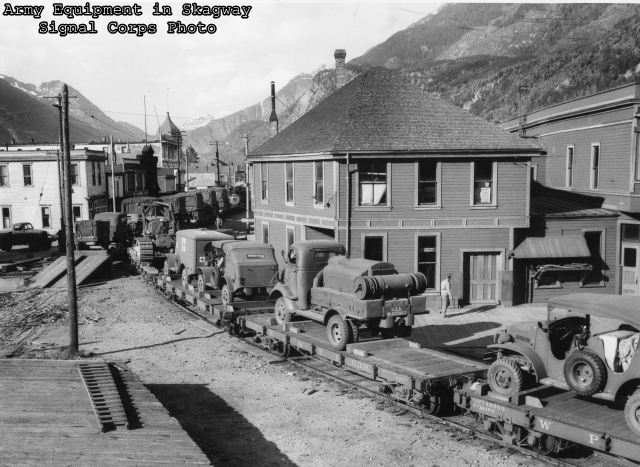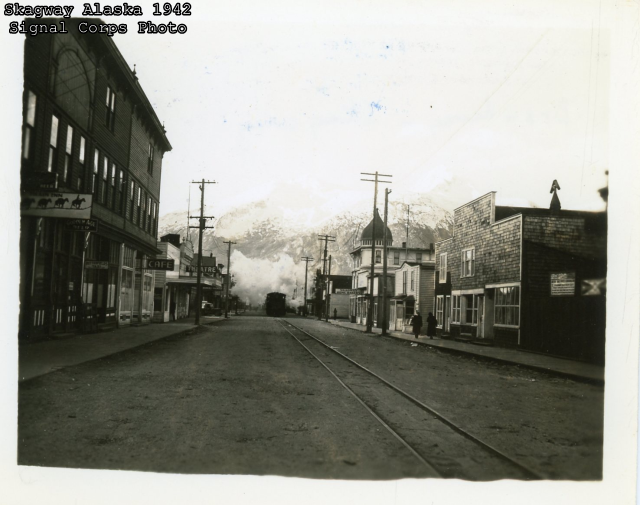People in Carcross knew, vaguely, that there was a war on. Townspeople even installed black out curtains on their windows—just in case. But the sudden influx of soldiers came as a shock. At first, they simply moved through to Whitehorse, but then, in May, they began to pour off the train and set up camp.
Ten year old Millie Jones had spent her life in Carcross—Mom cooked at the hotel, Dad and Grandpa worked for the railroad. When that first train stopped and began disgorging soldiers, she ran, bursting with excitement, to the depot with her schoolmates to see the “black white men”.

That the black soldiers never came into the hotel or even to the front door, mystified Millie. They did, though, come to the back door to request drinking water. And Millie’s mother supplemented that refreshment with fresh baked bread. Sometimes with cookies.
Helping to clear the dining room one evening, carrying a stack of dishes to the kitchen, Mille heard the most incredible sound she’d ever heard coming from the back porch. She aimed the stack of dishes at the table; missed; didn’t even notice.
Someone had rolled the piano out to the porch where a black soldier brought sounds out of it that Millie had never heard before. And other soldiers gathered around with other instruments—guitar, trumpet, banjo… In her living room in Whitehorse, seventy years after the fact, Millie’s face shines at this memory from her girlhood. Asked, somewhat hesitantly, whether she remembered the name of the tune, she flashed a broad grin and, without hesitation, said “Pistol Packing Mama”.
A striking feature of the photograph that hangs in the depot at Carcross today, a large group of black soldiers in front of the depot in 1942, is the number of musical instruments they carried. Lt. Mortimer Squires who served as regimental motor officer in 1942, remembers the soldiers spontaneously breaking into song—sometimes forming into quartets or breaking out a guitar or harmonica.
These men grew up in the Delta during the 1930’s. Why I’m I surprised they brought music to the road?








